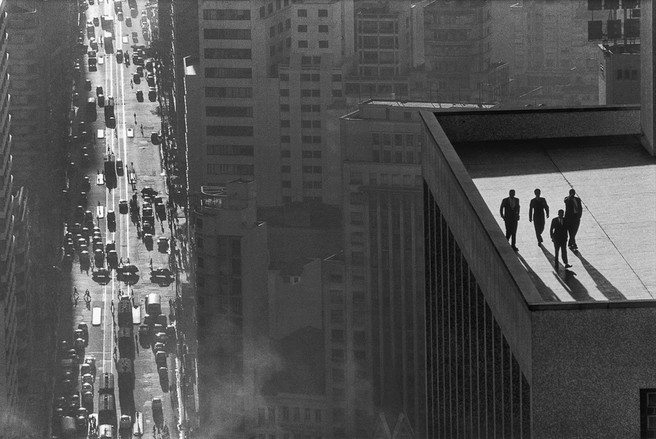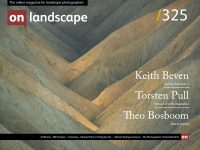Andrew Tobin chooses one of his favourite images

Andrew Tobin
Andrew is a recovering sports photographer. After covering the 2014 World Cup in Brazil for the UK national newspapers, he chucked it in and decided to shoot for personal enjoyment with a focus on landscape photography.
I have been fascinated by this image for years. I was quite young when I first saw it, and it has stuck with me ever since. I think it hit my subconscious on first viewing. I can't remember when or where it was, probably some Sunday newspaper magazine that I was flicking through. I encountered it several times over the years, and it always leaves me with a visceral sense of trepidation, concern and curiosity.
Sadly René Burri died in 2014. Born in Zurich, he began his photography career in 1946 at the tender age of 13 when he photographed Winston Churchill who was visiting Switzerland at the time. He went on to work for Walt Disney before joining the revered Magnum agency as an associate in 1955. He graduated to full Magnum membership in 1959.
Burri went on to create iconic photographs of Fidel Castro, Pablo Picasso, and Le Corbusier. His street photography is a lesson in composition, layering and drama. His documentary work in America, China and Vietnam is second to none, simultaneously conveying feeling and fact. Of landscapes, he has some crackers. I could spend hours looking at "Former Summer Palace. Dead lotus flowers on the Kunming Lake" for example.
Refreshing myself for this article by perusing his portfolio on the Magnum website ended up with me getting lost again in his photographs. If ever you want to learn what makes a powerful image, look at Burri's work. He is the epitome of the saying "if you want to be a better photographer, stand in front of more interesting stuff" (Jim Richardson, National Geographic photographer). But of course, it is more than just standing in front of something interesting. You need to compose, you need timing, you need to think and act and maximise your opportunity to create a stand-out photograph.

I could have selected 20 or more of his pictures for this article, but it is his Rooftop image that is constantly arresting. Like most great images, it has many components to it, and it asks questions rather than answering them. Why is he on a rooftop. Who are these suited people on the other rooftop? Why are they there? It's quite sinister. Unusual. What is going on? Did Burri know they were going to be there? He says not - it was purely coincidental. It's just very very strange.
What is not coincidental is the composition and timing. In low light, I imagine late afternoon, he's gone up on the rooftop to create an image that he's seen in his head at street level. The light reflecting from the road and the haze in the air lend everything a slightly vague and washed-out quality, except for the figures on the building who are suddenly contrasty and deep black, drawing attention immediately. Add in the vertical straight lines and then the only diagonal is the parapet which separates the normal cityscape from the weirdness happening on the rooftop.
I was lucky enough to see him speak at an event in London a few years before he died. There were numerous other speakers, but Burri captured the room like no other. When this image came up on the big screen you could feel the air being sucked out of the auditorium. As a single picture, it is impressive enough. As part of his portfolio of images, it sits amongst a body of work which is simply stunning.
Burri's imagery is a great lesson in simplicity, composition, and creating pictures that ask questions. I fail to get anywhere close, but it's great fun trying. One day…
Do you have a favourite image you would like to write an endframe article on? We are looking for contributions for our forthcoming issues, so please get in touch!

